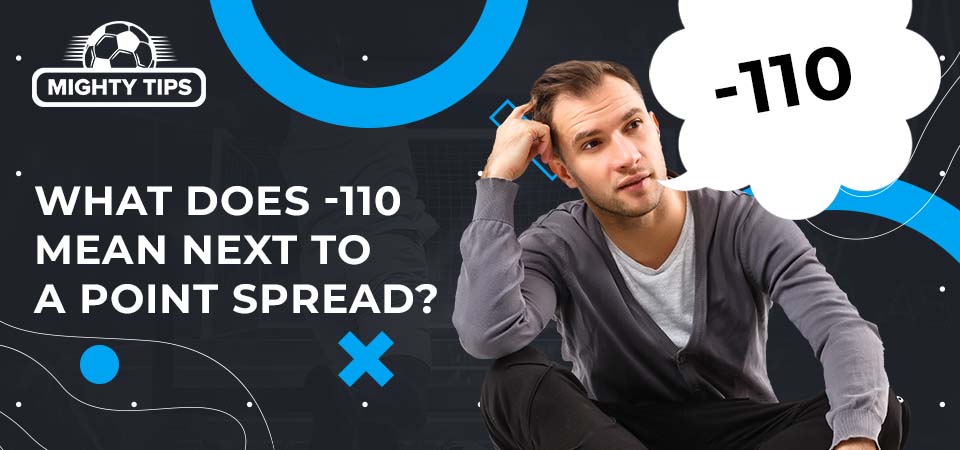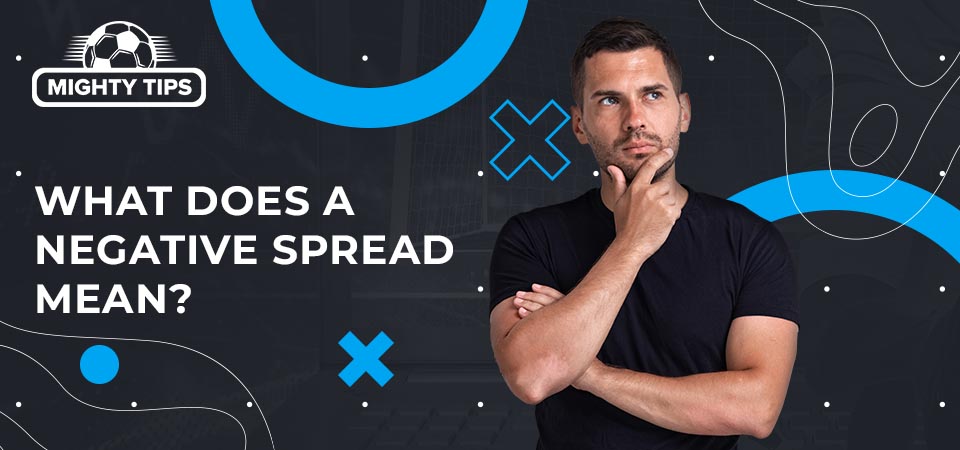
What does each way mean in betting
Professional sports were thriving in the 1940s. Not only was this good news for the various leagues, but it was also a blessing for bookmakers. With more and more games going on, more people were betting, which meant that the bookies were making more cash. However, they had a bit of a problem. Back then, if you wanted to bet on sides, you had to wager on the moneyline. As such, bookmakers weren't generating a lot of betting action on one-sided games. If a game offered moneyline odds of, say, 1.10 and 8.00, it offered very little value for favorite backers. On the flip side, many underdog bettors would shy away from such long odds.
A teacher turned bookmaker named Charles McNeil came up with a solution. This solution would make betting on favorites and underdogs more attractive no matter how much disparity existed between the two teams. This solution is known as the spread, and it revolutionized sports betting. So, what does spread mean in betting? Well, that is the topic of discussion for this tutorial. We will explain the spread in detail so that you have a full understanding of it. You will find the answers to a plethora of spread-related questions, including the answer to what is the spread in NBA betting, NHL betting, and more. Reading this guide will open up a whole new world of sports betting possibilities.

Think of the spread as the great equalizer in sports betting. Introducing the spread, also called a handicap, levels the playing field. With a spread, a favorite doesn't just have to win a game against an underdog. Instead, the superior team must win by a certain margin. Conversely, the underdog can still lose, but it can only lose by a certain margin.
When you hear something like "The Buffalo Bills are 5.5-point favorites against the New England Patriots", it means that the Bills have to win the game by more than 5.5 points. Meanwhile, Patriots backers would need New England to either win outright or lose by fewer than 5.5 points. As such, betting on the underdog Patriots either straight up or in a parlay is a more appealing prospect. At the same time, it gives pause to Bills backers. This results in a more even split in the betting action, which helps the bookmaker's bottom line.
When you see spreads listed at an online sports betting site, you will notice that one number is expressed as a positive number and the other is displayed as a negative number. For example, you'll see something like this:
What do these positive and negative numbers mean? Well, the "-" sign denotes the favorite. Because Detroit is assigned the negative number in this example, it means that they are the favorites. The 4.5 represents the number of points they need to win by. Of course, there are no half-points in basketball, which means that Detroit must win by at least 5 points. An outright loss or a victory of less than 5 points won't cut it.
The "+" symbol assigned to the Raptors' spread means that Toronto is the underdog. The 4.5 spread means that they can either win outright, or lose by no fewer than 4.5 points. Again, this essentially means that they can't lose by any more than 4 points. So, when you see a "-" sign, it always signifies the favorite, while the "+" identifies the underdog. The number tells you how many points the favorite must win by or how many points the underdog can lose by.

Almost all sports facilitate point spreads in some way. You will always find them in major team sports like football, soccer, hockey, basketball, and baseball. You can bet spreads in Aussie rules football, cricket, lacrosse, and many other markets. Even individual sports that feature a field of competitors, like golf and Formula 1 have spreads. For example, the most respected UK sportsbooksoffer head-to-head betting matchups in golf. The favorite must defeat the opponent by a certain number of strokes. In tennis, the spread can apply to how many sets a player must win or lose by.
Picking moneyline winners is usually a little easier than picking winners against the spread. For instance, an MLB match between the Atlanta Braves and Miami Marlins might have the Braves priced at 1.39 on the moneyline and the Marlins priced at 3.05. It is clear that the probability of the Braves winning is much higher than the probability of the Marlins winning. However, if the Braves are assigned a standard runline spread of -1.5, then we have a much tougher decision. The Braves still have a significantly higher probability of winning, but the probability of winning by 2 or more runs isn't nearly as high.
It doesn't matter whether you bet on spreads, moneylines, or any other type of bet. To be successful and cash in on winnings, you have to diligently research every match. You need to analyze various basic statistics such as goals for, goals against, penalties, and previous head-to-head results. The most profitable bettors dig much deeper and analyze things like injuries and the recent form of the teams and individual players. Many even consider X-factors like the weather and the referees. Of course, it's a good idea to find out how each team has fared against the spread. Some good teams are notorious for playing down to their opponents' level, while some bad teams have a reputation for keeping games close.
They say that information is power. The more information you can access and analyze, the better your chances of making winning picks. It also helps when spread bettors participate in bookmaker deposit bonuses and regular promotions. These offers can earn them such things as bonus betting cash, free bets, boosted odds, cashback, and other gambling perks. These offers can go a long way toward boosting your account balance. So does checking out our MightyTips free tips.
What does covering the spread mean? Well, let's say that you bet on the Boston Bruins as a -1.5 favorite. If Boston won the game by two or more goals, then they covered the spread and you win your bet. On the flip side, if you bet on the underdog Chicago Blackhawks' spread at +1.5, and they either win outright or lose by just one goal, then they have covered the spread and you win your bet. With spread wagers, one team will cover the spread and one team will not. Well, there is one exception to this rule which we will discuss further down in this "What Does Point Spread Mean in Betting" tutorial.
Point spreads sometimes change. There are a couple of reasons for this. The most common reason for a change in the spread is one-sided betting action. For example, let's say that the spread for an NFL game between the favored Baltimore Ravens and the underdog Indianapolis Colts opens at 6.5. In other words, we have the Ravens at -6.5 and the Colts at +6.5. Now let's say that the betting action is pouring in on the Ravens and that very few bets are coming in on the Colts.
One of the reasons why sports betting sites offer spreads is that they are supposed to result in even action. This ensures that the bookmaker makes a profit. In the above example, the vast majority of money is coming in on the Ravens, and this leaves the bookmaker exposed. The bookie stands to lose a lot of money if Baltimore wins. To try to balance things out, the bookie will adjust the spread to induce more bets on the Colts. In this case, the bookie might adjust the spread to, say, 7.5.
Spreads can also move as a result of some unforeseen circumstance such as a key injury. Let's go back to our Ravens opening line of -6.5. Now imagine quarterback Lamar Jackson gets hurt in practice and won't be playing. Instead, some unproven backup QB will get the start. This changes things significantly. In this case, the bookmaker would likely lower the spread by a point or two. Maybe even more.
In the opening of this "What Does Spread Mean in Betting" guide, we touched on how moneylines were once the only way to bet on a team to win. Games that featured juggernaut teams against cellar dwellers didn't generate as much betting action as bookies liked. The low odds of the heavy favorite didn't provide enough value for favorite backers and few people wanted to risk betting on such a big underdog to win outright. With the introduction of the spread, underdogs became far more appealing, while favorites suddenly offered value. Not many punters want to wager a favorite at 1.15 because there is next to no value. However, assigning a spread brings the potential payout much closer to even money.
The other reason for bookies offering spreads is that the spread brings in more balanced betting action. With the action being more or less even, the bookie is guaranteed to make a much bigger profit. With moneyline bets, ties equate to pushed wagers, which means the bookie does not make any money. It's a waste of time. When the bookie offers a spread like 1.5, 3.5, or any other number with a .5 attached, the possibility of a push is eliminated, and the bookie is virtually guaranteed to make money.
To recap, the spread is simply a tool that bookmakers use to attract even betting action. This pretty much guarantees that they make money. From a bettor's standpoint, the spread makes backing underdogs more attractive while giving favorites more value. A spread is composed of two components. First, it will either have a plus sign or a minus sign beside it. This tells bettors which team is favored. The second part of a spread is the number itself, which represents the winning or losing margin. If you see -3.5 beside a team on the betting menu, then it means that the team is favored by 3.5 points. If the spread reads +3.5, then it means that the team is the underdog and backers need them to win outright or lose by three points or fewer.
In sports spread betting, there will always be one favorite. This even applies when two teams are so evenly matched that it's a coin flip. It is up to the bookmaker to decide which of two evenly matched teams will be the favorite. That said, no two teams are truly evenly matched. One team will always have some edge, even if it's nearly indistinguishable. The spread is a good indicator of just how even or uneven an outcome is expected to be.
Just as every match features a favorite, they all have underdogs too. It could be a big underdog, or it could be a very slight underdog. The larger the spread, the bigger the underdog.
If you want to start betting spreads, then you need to understand what the hook is. The hook simply refers to the .5 points that are attached to most spreads. With a spread of 5.5, the hook is the .5. The hook ensures that the spread bet cannot end in a tie. This is simply because half-points don't exist in sports scores. If a team is favored by 5.5 points, then it must win by 6 points. For the underdog to prevail, it must either win outright or lose by no more than 5 points.
Bookmakers make their money by charging a commission on every selection they accept from their customers. This commission is typically called the vig or juice. Let's use a coin toss to illustrate this concept. As you know, a coin flip is truly a 50/50 proposition. If you bet $1 on a coin toss with a friend, then you each put your $1 in the pot and flip the coin. Whoever wins gets the entire $2 pot.
Now, let's say that a bookmaker facilitated this coin toss. You and your friend both give the bookie $1 and then flip the coin. Because the bookie has to make its cut, it will charge a small fee of, say, 5% as compensation. So, instead of the winner receiving the full $2 prize pool, he or she would receive a total payout of $1.90 and the bookmaker would walk away with ten cents.
Not every betting company charges the same amount of vigorish or juice. While one sports betting platform might charge 3%, another might charge 8% or more. The more vig a bookmaker charges, the less you profit when you place a winning bet. That's why you should always shop around for the best prices. With spreads, the opening odds are usually -110, which equates to 1.91 in decimal odds. Of course, this isn't always true. You can use a free odds margin calculator to quickly figure out exactly how much juice you're paying on any bet. Generally speaking, you don't want to pay much more than 5%.
What does the point spread mean in betting on NFL football? Well, it works the same in football as it does in any other sport. One team is the favorite as indicated by the minus sign, and the other is the underdog as indicated by the plus sign. Let's say that you see the following:
As you should know by now, this means that 49er spread bettors would need San Francisco to win by 4 or more points. Chiefs spread bettors would need Kansas City to either win or lose by no more than 3 points. Wouldn't that be an entertaining Super Bowl experience? As an aside, those who bet on NFL spreads need to be aware that there are certain key numbers in football due to the scoring structure. The most important numbers are 3, 7, and 10.
What does spread mean in basketball betting? Again, it means the same thing as it does in any other sport including NCAA basketball. The best basketball bookies will have one of the teams as the favorite as indicated by a minus sign. The favorite must win the game by a certain margin in order for their spread backers to win their bets. The underdog is denoted by the plus sign and their backers need the team to either win or lose by no more than indicated by the posted spread.
Compared to football and basketball, baseball games don't offer as much scoring in terms of total points. Still, each baseball game offers a spread. It is commonly referred to as the "runline" and it's almost always set at 1.5. The underdog will be listed at +1.5 while the favorite is listed at -1.5. If you bet the favorite on the runline, then you need them to win by 2 or more runs. If you bet on the underdog against the spread, you need them to either win or lose by no more than 1 run.
Like baseball, hockey games are generally low scoring when compared to football and basketball. Also like baseball, the standard spread for hockey games is 1.5. This is commonly called the "puckline". To win a puckline bet on the favorite, the team must win by at least 2 goals. If you back the underdog, then it must win or lose by no more than one goal.

What does a spread mean in sports betting? If you've come this far in this "What Does Spread Mean in Betting?" guide, then you should already know the answer. If you are still uncertain, then it's a number that's assigned to a matchup. A negative number denotes the favorite and the minimum number of points it must win by. A positive number denotes the underdog and the maximum number of points it can lose by. If a team is listed at -4.5, then it must win by at least 5 points. If a team is listed at +4.5, then it can either win straight-up or lose by no more than 4 points.
When you see a number like -6.5, then you can think of it as if that team is starting the game with a 6.5-point deficit. That means that they must win the game by 7 points or more. Having a +6.5 spread is like being spotted 6.5 points to start the game. As long as that team either wins outright or finishes the game within 6 points of the winner, then it beats the spread.

When you see a -110 next to a point spread, this tells you how much you stand to win if your bet is successful. It's like a price tag. In simple terms, -110 means that you need to bet $110 to win $100. Odds are displayed in three main forms, which are American odds, decimal odds, and fractional odds. They look like this:
Even though the above examples look quite different, they all have the same value. -110 in American odds is the same as 1.91 in decimal odds, which is the same as 0.91/1 in fractional odds. Almost all online bookmakers allow you to choose how you wish the odds to be displayed. You might also want to refer to our free betting calculator and convert the odds yourself.
When you bet the spread on a favorite, you need the favorite to win by a certain number of points. For example, if you bet on the favorite at -1.5, then that team must win by 2 or more points. If it does, then it has beaten the spread. If you bet on an underdog at +1.5, then winning straight up or losing by no more than 1 point beats the spread. When a team beats the spread, it just means that it came through for its backers.

When you see the spread expressed as a negative number, it means that the team is favored to win. The number that the minus sign is attached to represents the number of points the team needs to win by in order for your bet to win. If you see a -7.5 beside the Los Angeles Lakers, it means the Lakers must win by 7.5 points. Of course, this really means 8 points because there are no half points in basketball. An outright loss or a win by 7 or fewer points is a loss against the spread.
If you look at our expert football betting predictions and see a "+" beside a spread, it means that the team is the underdog. For instance, let's say that you bet on the Philadelphia Eagles at +3.5. This means that you win your bet if the Eagles either win straight up or if they lose by 3 or fewer points. If they lose and lose by 4 or more points, then your spread bet would lose too.

The short answer to this question is yes. Point spread bets can result in pushes. However, this can only happen in a scenario in which the spread is listed is a whole number like 2, 5, 10, or any other number that does not have a decimal attached to it. You will find that the vast majority of spreads offered by the best NBA online betting website come with a hook. That is to say that the spread usually has a .5 attached to it such as 1.5, 3.5, 6.5, and so on. Bookies do their best to add the hook to their lines because it means that all bets will either win or lose. When bets push, bookies don't make money.
When you bet on a favorite, that team must obviously win in order to cover the spread. However, it is also possible for a favorite to win straight up and fail to cover the spread. If you bet on the New York Yankees -1.5 to beat the Blue Jays, and the Yankees win by a score of 4-3, then they have won the game but lost against the spread. On the other hand, an underdog can lose a game straight up and still beat the spread. An example would be betting on the Vancouver Canucks +1.5 and having them lose the game 3-2. They lose the game outright, but they cover the spread.
A -7 spread means that the team is favored to win by 7 points. Because there is no hook, a win by exactly 7 points would result in a push. To win that bet, you would need the team to win by 8 or more points. An outright loss or a victory by 6 or fewer points would result in a loss against the spread.
If you see a -3 beside a team on the betting menu at any of the best European sportsbooks, it means that the team is favored by 3 points. Having no hook means that an outright loss or a victory by 2 or fewer points is a loss against the spread. A win by exactly 3 points would result in a push, while winning by a range of 4 or more beats means a winning outcome.
Seeing a -4 spread means that the favorite can only beat the spread if it wins by 5 or more points. A straight-up loss or a win by 3 or fewer points loses against the spread. A 4-point win would result in a push.
When a football team is assigned a spread of -2, it means they are a slight favorite. If you bet on that team against the spread, they have to win by three or more points. A 2-point victory would result in a push, while an outright loss, a tie, or a 1-point win would result in a losing spread bet.
When you see a spread of +3.5, the "+" tells us that the team is an underdog. The 3.5 tells us that we would need that team to win the match or lose by no more than 3 points. A tie does the trick too. A loss of 4 or more points would result in a losing wager.
A +7 spread means that the team is a significant underdog. If you stake a wager on a spread of +7, an outright win, a tie, or a loss by 6 or fewer points would result in a win. Losing by eight or more points would be a loss, while losing by exactly 7 points would be a push.
Being listed at +1.5 means that the team is the underdog. If you wager a team at +1.5, you need that team to win, tie, or lose by no more than a single point. A loss by two or more points results a losing wager.
If a team is listed at +2.5, and you bet on it, you need your team to win, draw, or lose by 2 or fewer points. If they lose by more than 2 points, then your bet goes up in flames.
When the sportsbook has one team listed at +5, it means that the oddsmakers consider them an underdog. If you take +5, then your team can either win, tie, or lose by 4 or fewer points. A loss by exactly 5 points would result in a push, while losing by 6 or more would result in a losing bet.